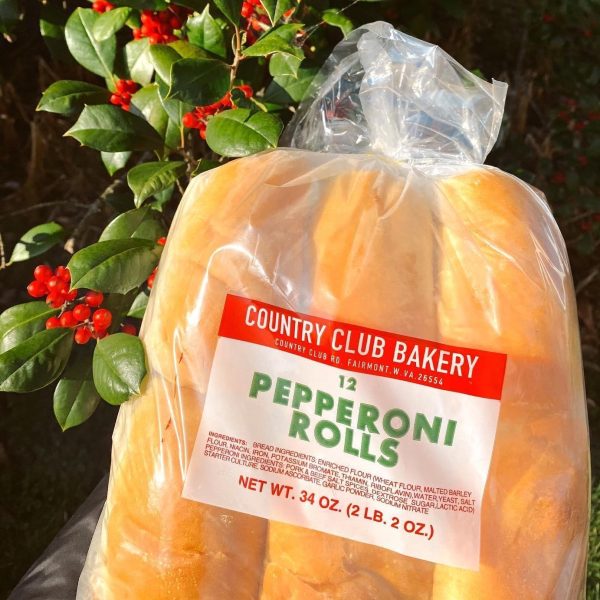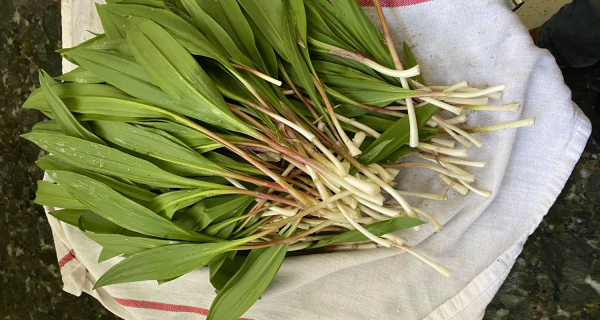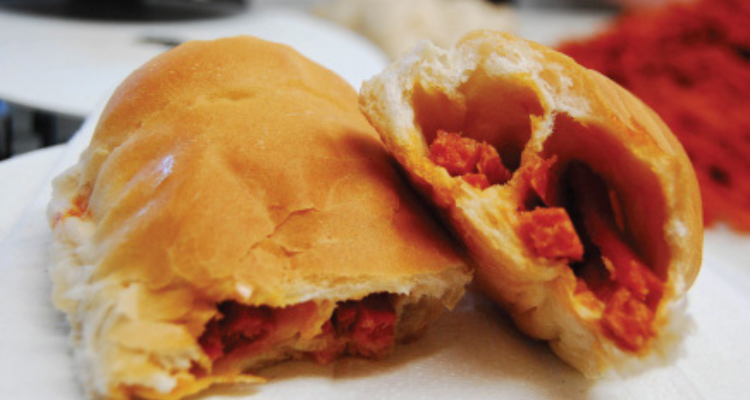If you live in West Virginia, you know that certain foods are unique to Appalachia. Pepperoni rolls and ramps are two of these foods that we as Appalaichans can claim as our own, and we are often proud to share our love of these foods with those who might not have heard of them before. So, today we serving up an homage to two of our favorite West Virginia foods!
The West Virginia Pepperoni Roll
Most West Virginians know that the pepperoni roll’s origins had something to do with coal miners, but what is their exact history? There are many conflicting accounts about who should receive credit for creating the famous pepperoni rolls we know and love today. More often than not, credit for the creation of the pepperoni roll goes to Italian immigrant and coal miner, Giuseppe “Joseph” Argiro. However, it’s more likely that miners’ wives are to credit for this foods’ origin, while Argiro is to be thanked for being the first to mass produce the rolls for commercial sale.
As coal miners often had long shifts that usually lasted anywhere from ten hours to a few days, many foods couldn’t be packed in a miner’s lunch pail as they would spoil before being eaten due to how hot the mines were.1 Enter the pepperoni roll. Because its simple ingredients consisted of just bread and pepperoni (a cured meat and therefore not easily spoiled) and occasionally cheese, it was the perfect food to pack for long shifts in the mines. Miners’ wives often made their own bread, and most likely either made their own pepperoni or bought it at the company store along with any cheese they wanted to incorporate.2 Because the ingredients were few and simple, pepperoni rolls were an easy and affordable food for miners’ wives to make in addition to their daily family meals.
While Argiro most likely did not invent the famous pepperoni rolls, as it was probably his wife making them and packing them for his lunch most of the time, or he heard of the food from other Italian immigrants, he did help commercialize their sale. He left the coal mines in 1927 and decided to open Country Club Bakery in Fairmont, WV, which is still open today and producing its original pepperoni rolls.3

Making pepperoni rolls is something that many women still do at home today. Pepperoni rolls are traditionally made with just pepperoni wrapped in dough and baked, however, many people enjoy adding other ingredients to their rolls. Various cheeses such as mozzarella and pepper jack are classic and welcome additions to the mixture, and most rolls are baked with some sort of herbed oil spread on top, which adds to the flavor. While some will choose to make their own dough and omit cheese for a more “authentic” roll, many opt for the cheaper and easier route that still tastes just as good. If you want to make your own pepperoni rolls, you can find a plethora of recipes online or follow this easy recipe by Southern Living.
READ MORE: The West Virginia Pepperoni Roll
Ramps: A Spring Delicacy in Appalachia
Another food native to Appalachia are ramps. According to the West Virginia Encyclopedia, ramps are “a member of the lily family and onion genus (Allium tricoccum) and a spring culinary treat.”4 Ramps are in the same family as leeks, garlic, shallots, chives, and scallions, and their taste and smell is a strong mixture of onions and garlic.5 They can be found with their broad green leaves popping out of the ground in many wooded areas in Appalachia. The entirety of the ramp can be eaten from its roots and bulb up to its leaves, and many recipes incorporate the whole plant. There are a variety of ways that ramps can be cooked, but there are a few that you are more likely to find in West Virginia. A common method of ramp preparation is to chop them up, sauté them, and then serve them in scrambled eggs. The bulbs can also be pickled for year-round use, while the leaves can be made into ramp pesto or dried and made into ramp powder.

While you can go online and find ways to incorporate ramps into your home cooking, consider visiting the 85th annual Feast of the Ramson in Richwood, WV if you want to experience authentic ramp cuisine for yourself. The ramp capital of the world hosts a yearly one-day festival celebrating ramps that features a dinner, arts and craft show, local music and local shops. The dinner features homemade ramp dishes along with “potatoes, brown beans, cornbread, ham and bacon, desserts, Gub’s sassafras tea (also available for sale) and cold drinks” according to the Richwood Chamber of Commerce.
While both pepperoni rolls and ramps are an integral part of West Virginia food culture, women have undoubtedly played an important role in helping them become the classic foods they are today. Miners wives had to use the simple ingredients that were available to them and make a filling meal for not only their children but for their working husbands. Their ingenuity created staple Appalachian food that has become a large part of West Virginian cultural identity. Women also likely played a large part in creating recipes that incorporated ramps. Resourcefulness led to onions and garlic being substituted with ramps that could be foraged for free in the woods and a variety of recipes that use ramps in numerous ways. Today, women still play a large part in making these comfort foods for family and friends that will, without a doubt, be passed down for generations.
READ MORE: Spring is Ramp Season in Wheeling
If you want to learn more about the history of food culture in West Virginia and hear an interview with Chef Melissa about her local business Midge’s Kitchen, then you’ll want to listen to episode two of Weelunk’s latest podcast, Herstory.
Herstory will continue with new episodes each Monday through March. Listen here on Weelunk, or wherever you get your podcasts.
Want to learn more about West Virginia’s culinary delights? Check out these articles about paw paws and the West Virginia hot dog!
• Anna Griffith is a Senior majoring in English Rhetoric and Writing with a double minor in Creative Writing and Marketing. She is a founding member of Threshold and was the Public Relations Manager during her Sophomore and Junior year. She is continuing her PR position during her Senior year in addition to being Editor-in-Chief. After graduation, Anna hopes to attend a master’s program and eventually work in publishing or as a librarian.
References
1 National Coal Mining Museum for England. “Miners at Work.” July 2021. https://www.ncm.org.uk/app/uploads/2021/07/Miners-at-Work.pdf.
2 Indiana University of Pennsylvania Libraries, Special Collections and University Archives. “A Woman’s Day: Work and Worry. n.d. https://www.iup.edu/library/departments/archives/coal/people-lives-stories/a-womans-day-work-and-worry.html.
3 Country Club Bakery. “Country Club Bakery.” https://www.countryclubbakery.net/
4 McCallum, Barbara Beury “Ramps.” e-WV: The West Virginia Encyclopedia. 23 March 2023. Web. 11 March 2024.
5 Bon Appétit Test Kitchen. “Common Mistakes When Cooking with Ramps.” https://www.bonappetit.com/test-kitchen/common-mistakes/article/common-mistakes-ramps.



